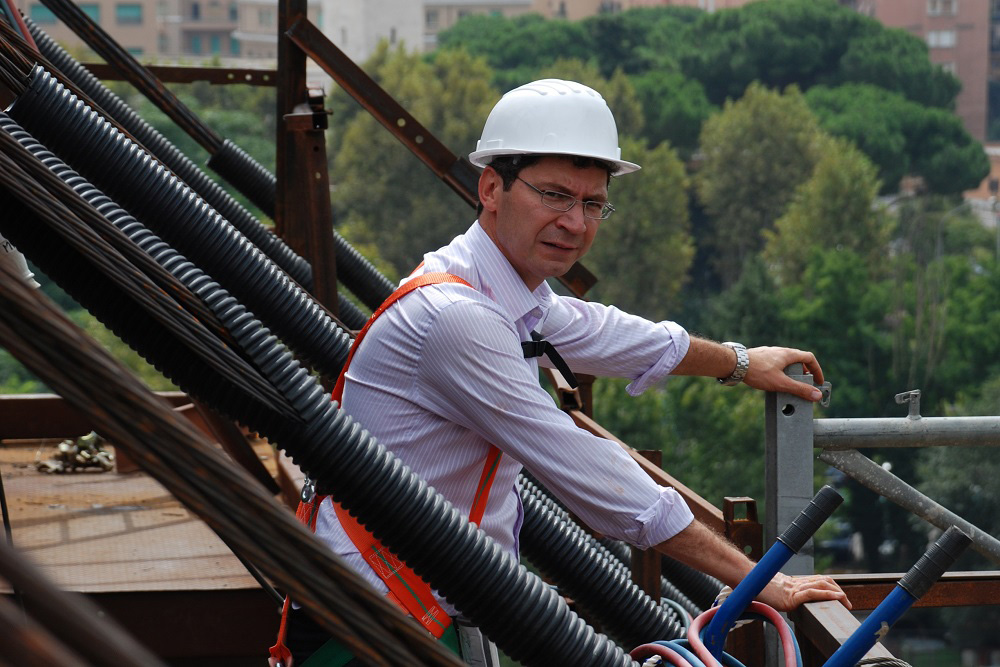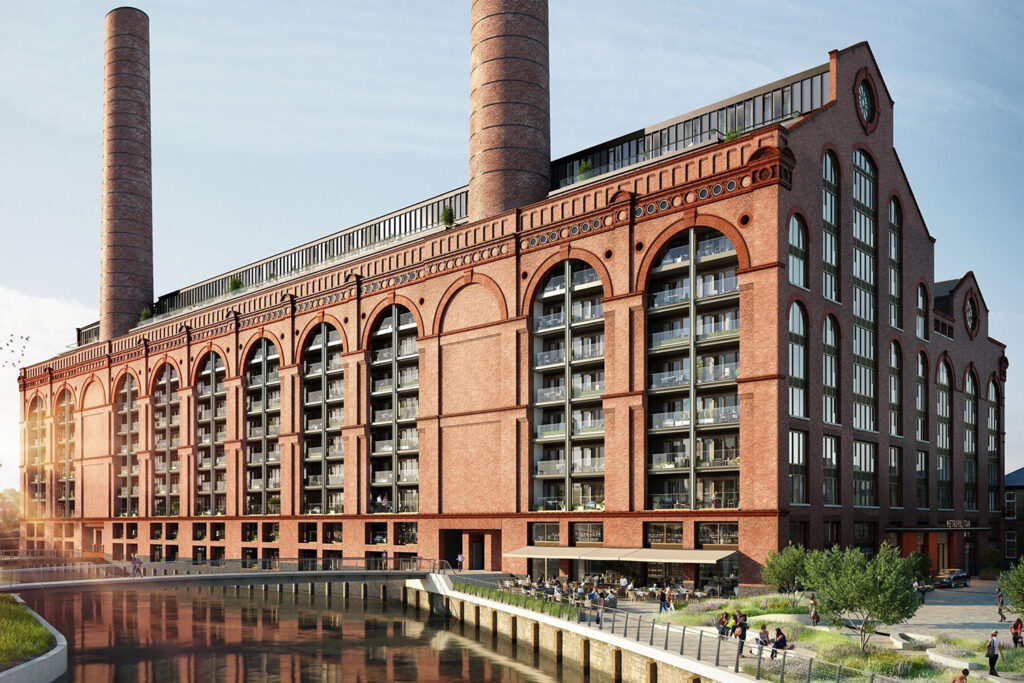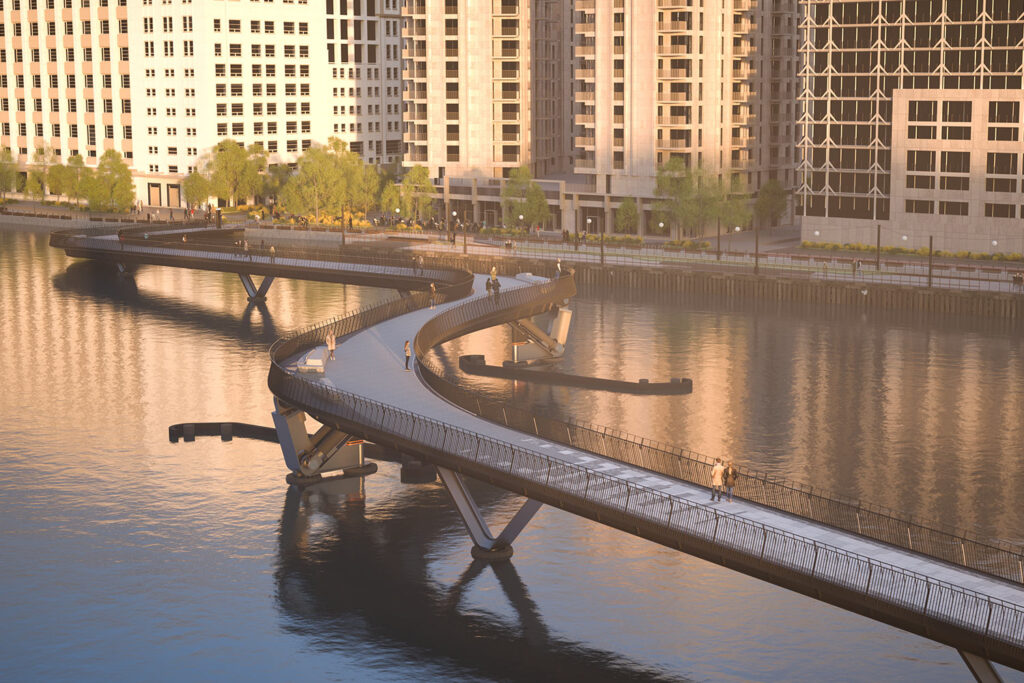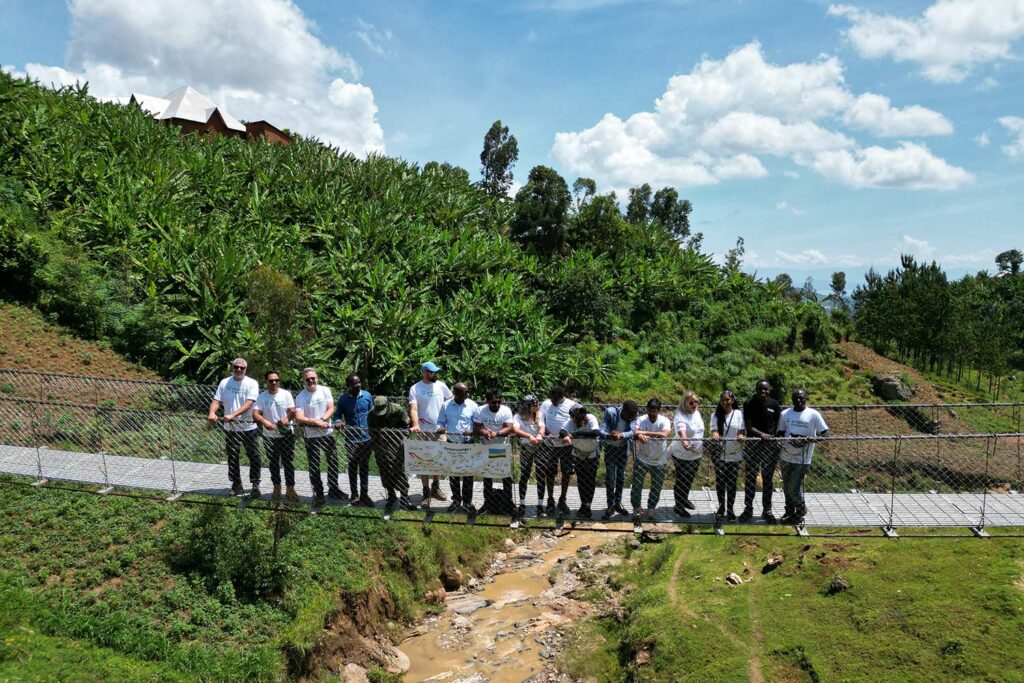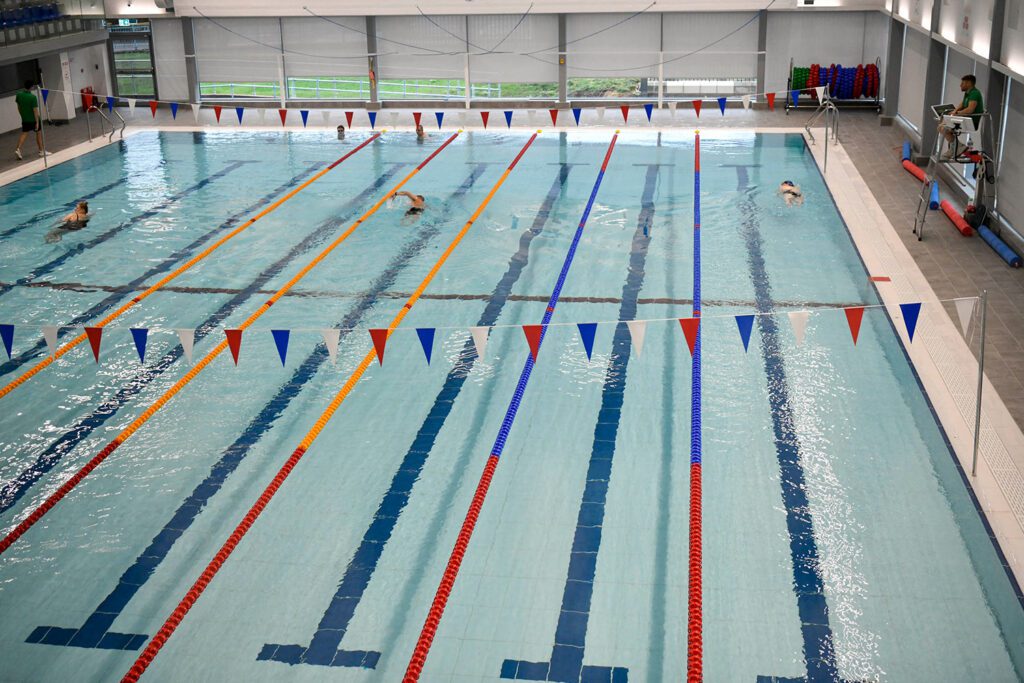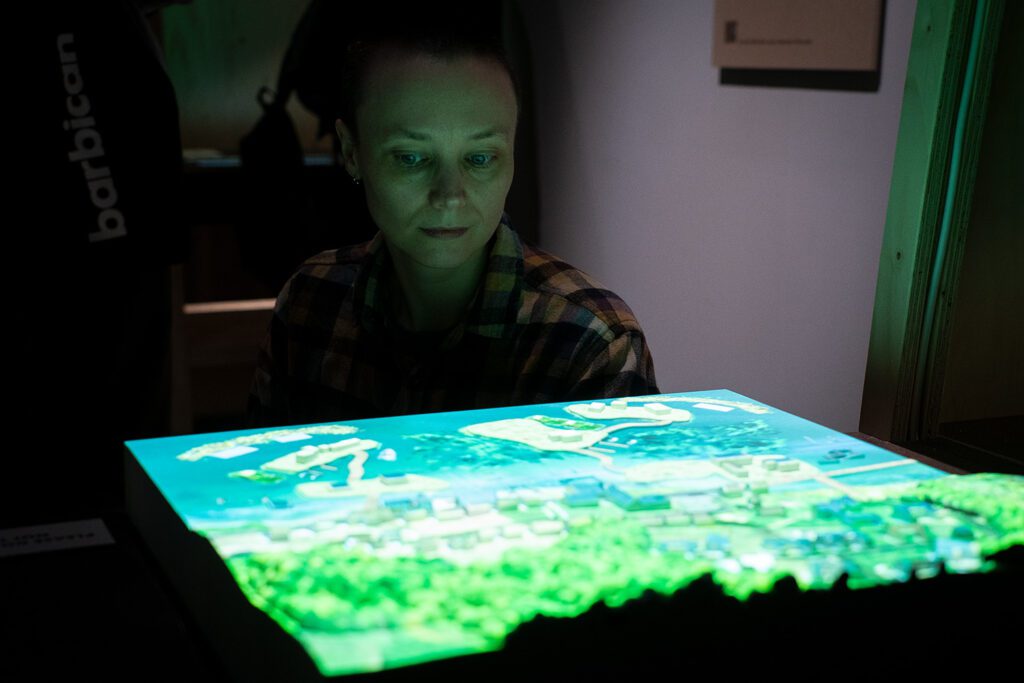Bridges as instigators for urban development
Julia Karasinska has been leading and designing specialist structure and bridge projects for more than 10 years. She is now taking the expertise she has gained during her time in London to our office in Berlin to grow and nurture a team there and strengthen our service offer in the European market.
Buro Happold has vast experience designing bridges including for instance, Ponte della Musica, Baakenhafenbrücke, Lille Langebro, The New Danube Bridge but so far we have not offered this service from our European offices. We therefore asked Julia about this new opportunity, what she is most excited about and what she likes most about being a bridge engineer.

You are now leading and expanding our new bridge engineering service offer in the European market from Berlin, what are you looking forward to?
There has always been a keen appetite for bridge projects in our European offices. Until now our Bridges team in London and Structures team in Berlin and Copenhagen collaborated successfully on many bridge designs, and I am really looking forward to building upon this experience. I aim to engage with as many collaborators as I can, to bring a more rounded service offering from our European office base. I believe we can combine the knowledge and skills among our talented consultants and engineers to come up with highly innovative solutions in the pursuit of creating iconic bridges in Europe.
What do you personally enjoy most in engineering bridges?
Bridge engineering is more than designing a structure spanning over water, road or railway. It is about contributing to the development of cities and joining communities, creating a live link between different areas and in many cases introducing an iconic symbol to mark the innovation and creativity of designers of different backgrounds. As a bridge engineer I am proud to be a part of this extraordinary group of people that continuously seek the opportunities to develop new efficient and sustainable solutions.
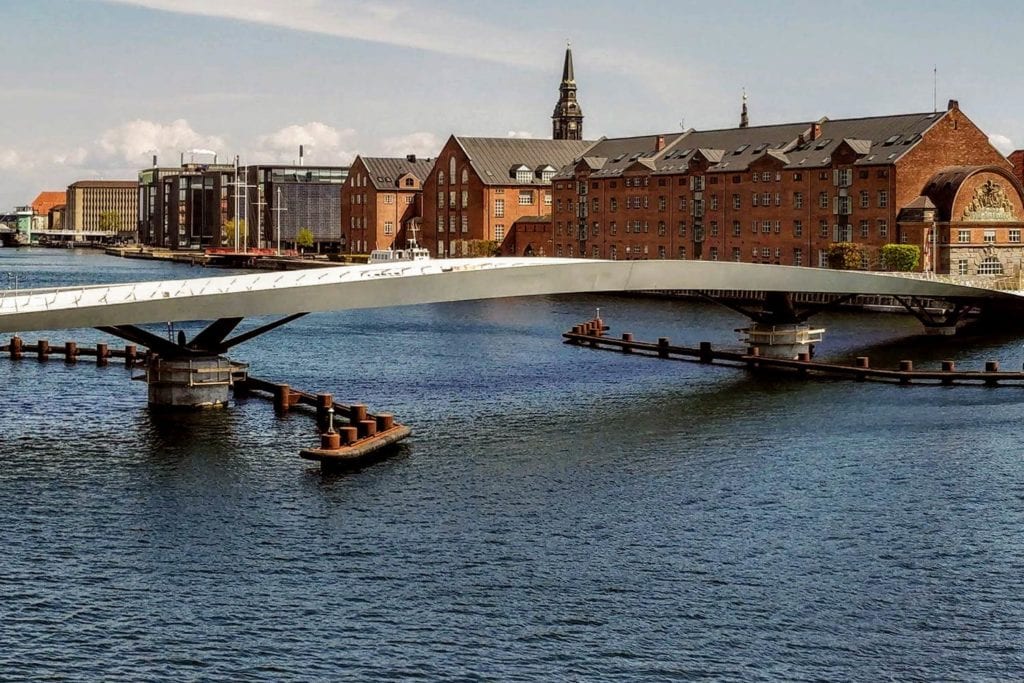
What has been your favourite project?
My favourite project is the Baakenhafenbrücke bridge in Hamburg because of its beautiful, functional and sustainable design. It is probably the most significant to me as well as it is the first-ever bridge project that I was involved in through to delivery. I was there to see it being completed which was tremendously rewarding – and, of course, it subsequently went on to achieve awards for its uniqueness! Baakenhafenbrücke was one of the five pilot projects in Germany that helped to establish specific assessment criteria for sustainability certification for bridges.
I visited the bridge again in August 2018, four years after its official opening. I was thrilled to see how the bridge has played a part in the development of a lively neighbourhood of urban living and leisure in the Baakenhafen area in Hamburg Hafen City and has become a destination in its own right.
Reducing the embodied carbon intensity of a bridge is challenging. What ways do you consider to help decrease their carbon footprint?
There are many factors that need to be considered at early stages that have an impact on embodied carbon of a bridge: materiality, design efficiency, construction processes and maintenance efforts. Where possible we want to use recyclable or carbon neutral materials, such as steel or timber. Furthermore, we must make sure the structure is easy to maintain and will remain functional for many, many years. We achieve that by, for example, eliminating elements with a shorter lifespan such as bearings and movements joins, by incorporating robust products and details and by providing easy access for inspection and maintenance.
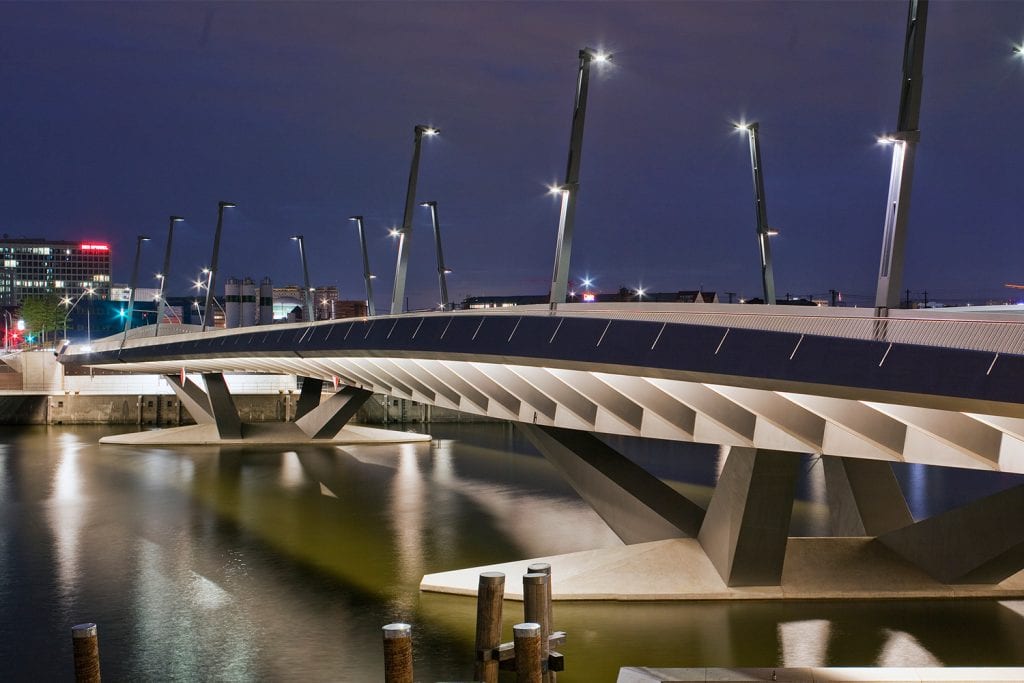
What disciplines need to come together to achieve a successful bridge?
A successful bridge is a result of joined efforts of architects, engineers and various specialist consultants. In the process of leading a bridge project we can often draw on the expertise of ground engineers, infrastructure engineers, transport and mobility teams as well as sustainability consultants. This collaboration is essential to ensure that we can provide the best solutions to our clients and the end users. Fortunately, at Buro Happold we have experts in all these disciplines, who are always eager to help and be a part of one of our amazing projects. Together, we deliver integrated designs of any scale and in the most challenging locations around the world.
What kind of projects would you like to work on in the future?
I want my future projects to be the ones that positively contribute to our cities, landscapes and our societies. I want to be part of the business that makes sure our work continues to thrive for innovation, mindfulness and sustainable thinking for future generations.

